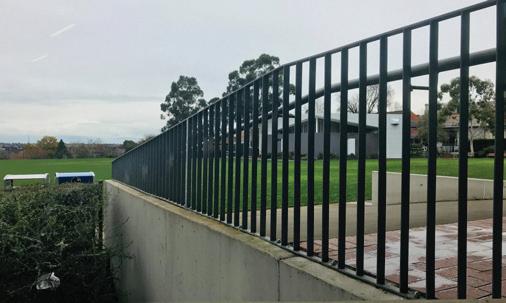Andrew Lim, Year 11
To day ’s Turning Point : Par tis anship, D emo cracy and the Le ss ons of History History is oft seen as an unchanging record – a list of events long since past, of battles fought in dusty tomes to protect ideals etched in unchanging stone. But such turning points in history, far from being the inanimate retellings of times long gone, are the very challenges that face the modern world today. The legacy left behind from today’s decisions – the story told of here and now – will become the decried or praised history of tomorrow. The world stands on the cusp of change – between a society of division, partisanship and authoritarianism and one of unity and democracy. But analysis of previous turning points in history may show a path forward for the many turning points of today. It is necessary to consider the pressing issue of partisanship. In today’s modern political context, democracies across the globe are being pushed to extreme views. According to the Australian Election Study (AES), between 1996 and 2016, the percentage of Australian politicians declaring themselves to be moderate went from almost 40% to 10%1. A similar shift can be seen throughout the electorate, with self-described centrist voters decreasing by 12% over the same period.2 Support for political fringe and single-issue parties is at a record high, with Pauline Hanson’s One Nation, Nick Xenophon and others commanding an increasing share of political power. While some declared the 2018 South Australian election to be showing a change in this movement, the minor party lower house primary votes remained at a record-high number. It is increasingly clear that Australia
is moving further and further to opposite ends of the political spectrum. But it is not limited to Australia. In Britain, the traditionally centre-left Liberal Democrats, who have maintained a key place in the centre of British politics since the 1800s and once were strong enough to form government, have lost much of their power, reduced to a mere 11 seats in the House of Commons.3 In the United States, meanwhile, a sitting president divides even the judiciary, traditionally above party politics, into ‘Obama judges’ and ‘Trump judges’, attacking the very foundations of a rule-of-law based democracy.4 But there is a parallel in contemporary history for such hyper-partisanship. In the late 1700s, as the American Revolution took hold, professing radical ideas like fundamental human rights and autarchy, the world found itself at a turning point – between democracy and autocracy. The political landscape within democratic America itself was torn apart by partisan infighting. Two major parties were formed – the Federalists, standing for strong centralised government control; and the Democratic-Republicans, standing for individual liberties and freedoms. The atmosphere was akin to today’s politics. Both parties used fearmongering and personal attacks, helped by a polarised media – the Federalists, led by Alexander Hamilton, scaring the public by depicting
Har r y Newman - Year 7
1 Harris, L., & Charlton, A. (2018, April 2). The fundamental operating model of Australian politics is breaking down. The Sydney Morning Herald. Retrieved from https://www.smh.com.au/politics/federal/the-fundamental-operating-model-of-australian-politics-is-breaking-down-20180322-p4z5o9.html 2 ibid. 3 Parliament of the United Kingdom. (2019). Current State of the Parties. Retrieved from UK Parliament: https://www.parliament.uk/mps-lords-and-offices/mps/ current-state-of-the-parties/ 4 Durkin, E. (2018, November 22). John Roberts chastises Trump for criticising judge who blocked asylum order. The Guardian. Retrieved from https://www. theguardian.com/law/2018/nov/21/john-roberts-chief-justice-trump-obama-judge
20 A m p e rs a nd 2 0 1 9





















